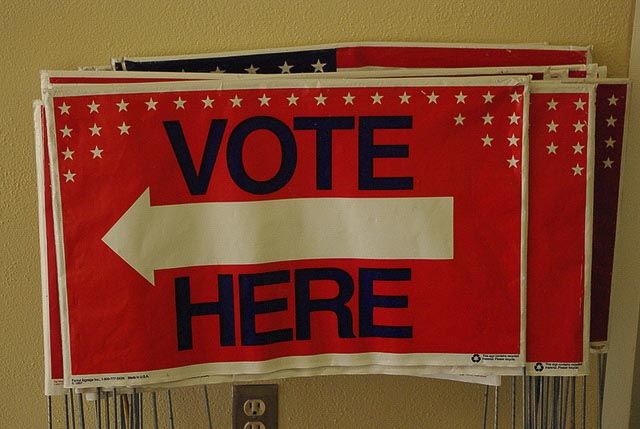Just as the political representation of women and minorities has surged in recent decades, the representation of working-class people has fallen.
That trend raises an important question: are women, minorities and the working class in a zero-sum game for political representation? Is there a pie of political opportunities, with wealthy men occupying the largest slice, leaving poor, minority and female candidates to battle over what’s left?
Turns out that’s not the case, Duke University public policy professor Nicholas Carnes discovered, according to his 2013 study based on data from the Kinder Institute’s Local Elections in America Project (LEAP).
“Working-class candidates don’t pose a threat to women or minorities,” Carnes writes. “Most of them are women or minorities.”
The Study
Defining “working class” as anyone employed in manual labor or the service industry, the study finds that the country has always been governed almost exclusively by a wealthy class of white-collar professionals.
From 1976 to 2007, the share of black or Latino representatives in Congress increased from 9 percent to 11 percent, and female representation went from 8 percent to 24 percent. Blue-collar representation, on the other hand, fell during that time fell from 4 percent to 2 percent.
Carnes proposes three ways in which those trends might be related.
Maybe working class representatives are mostly white men. That could explain while their numbers are falling while those of women and minorities in office are rising.
Or, he posits, maybe white male working class politicians are viable candidates only in the same types of races as women and minorities. Essentially, they could be crowding each other out in particular offices.
Finally, a third option may be that there is some sort of ceiling for female and minority representation that has already been reached. Perhaps new white male candidates may cost women and minorities seats.
Carnes looks at election data in California between 1995 and 2011, since California is the only state in the Kinder Institute’s LEAP database that requires candidates to list their occupations. Its political institutions also tend to have diverse representation.
The data show women and minorities have greater representation than working class candidates in all levels of California offices – school boards, legislative offices and executive or administrative offices. And all three groups – women, minorities and blue-collar workers – perform better in lower-level races. These numbers alone, Carnes concludes, cast doubt on the idea that women and minorities are limited to a certain niche of political office.
“It seems more likely that … women and minorities can win in many types of elections in California,” he writes.
What’s more, white men actually make up a minority of blue-collar politicians. White men constituted 43 percent of blue-collar politicians, while 30 percent were women and 27 percent were non-white men.
Moreover, white-collar candidates are more likely than working-class candidates to be white men.
“In sharp contrast to the idea that working class candidates pose a threat to women and minorities, working-class candidates are more likely to be women and minorities themselves,” Carnes writes.
He concludes that working-class representation appears not to be a threat to minorities and women, and in fact increasing the share of officeholders from the working class would increase the total representation of women and minorities.
And, it seems there aren’t even types of offices that are the exclusive niche of women and minorities at all.
That is, none of the conditions that would suggest a zero-sum game between working class and minority or female representation appears to exist.
“There is room for more working-class candidates—and more female and minority candidates, too,” he concludes.
The Implications
At least in California – and, Carnes writes, there’s evidence to suggest the same is true elsewhere – there doesn’t need to be any fear that advocating for increased political representation of working-class people would in any way undermine the recent gains in minority and female representation.
Those who have committed themselves to making the country’s political systems more representative can have their cake and eat it too: there’s no competition for scarce political resources between women, minorities and the working class.

